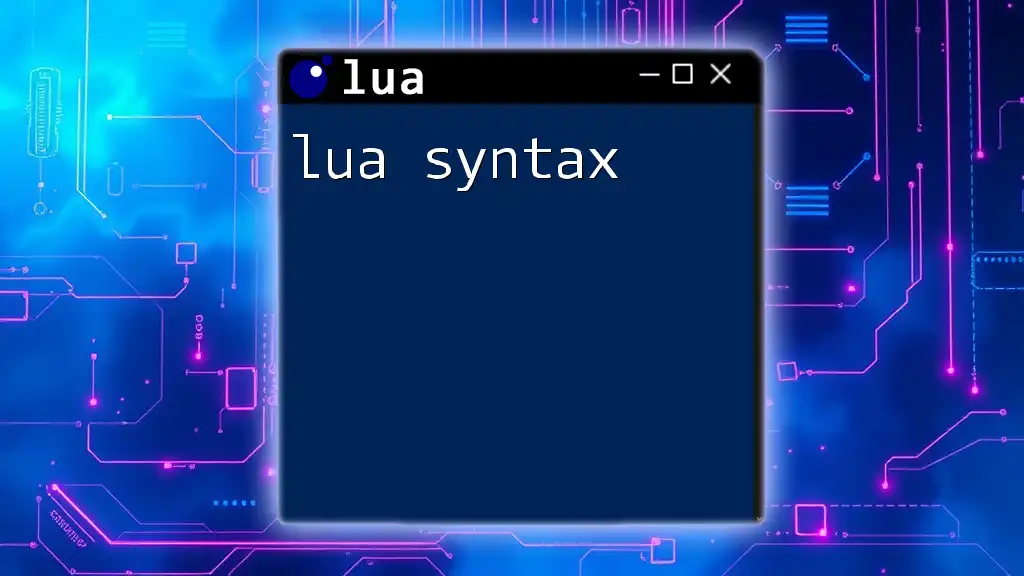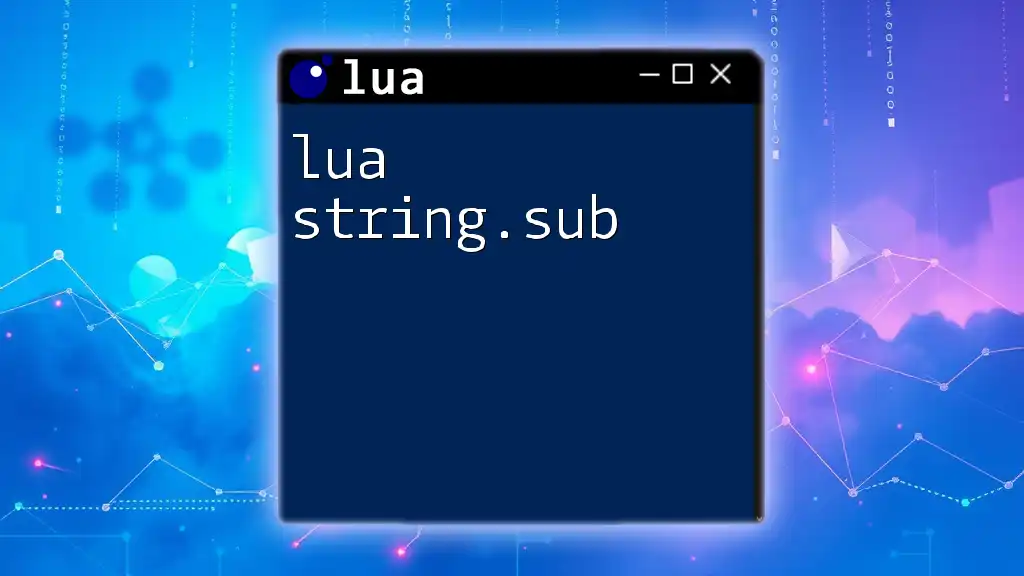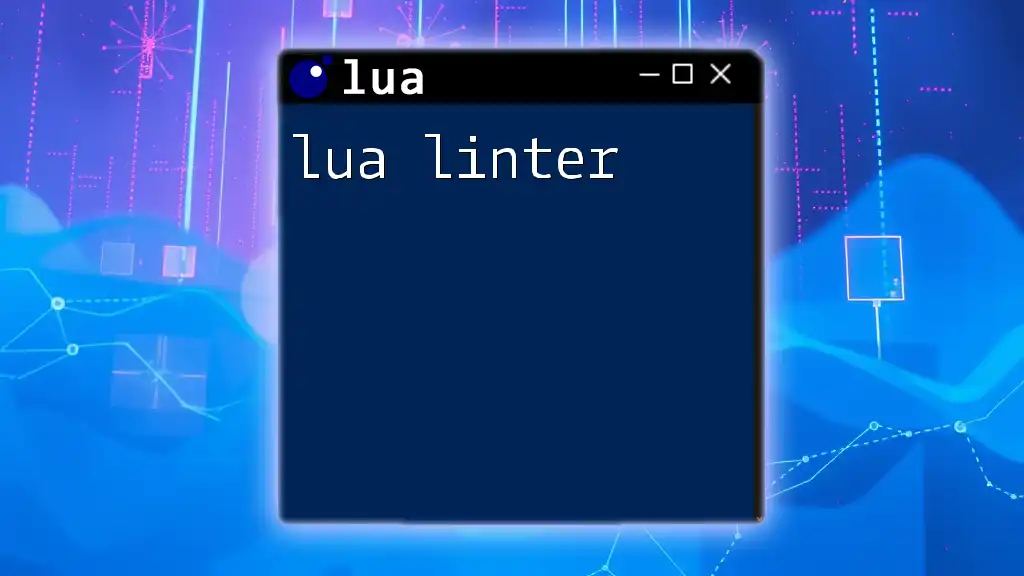Lua syntax is straightforward and flexible, allowing users to define variables, create functions, and manipulate data structures easily; here’s a simple example:
-- This script defines a function that adds two numbers
function add(a, b)
return a + b
end
print(add(3, 5)) -- Output: 8
What is Lua Syntax?
Lua syntax refers to the set of rules that define how Lua programs are structured. Understanding syntax is crucial, as it serves as the foundation upon which programming logic is built. Lua's design philosophy emphasizes simplicity and flexibility, making it accessible for beginners while powerful for advanced users. Compared to other programming languages like Python or JavaScript, Lua maintains a straightforward and minimalistic approach, prioritizing ease of use and adaptability.

Basic Structure of Lua
Source Files and Execution
Lua code is typically organized in files with the `.lua` extension. When you write a script, you save it in a text file and can execute it using the Lua interpreter. To run a Lua script named `script.lua`, you would use the following command in your terminal:
lua script.lua
This command invokes the Lua interpreter, which reads and executes the commands in the specified file, producing output as needed.
Comments in Lua
Comments are essential for documenting code and aiding in understanding. In Lua, you can create single-line comments using the `--` syntax:
-- This is a single-line comment
For multi-line comments, Lua uses the `--[[ ... ]]` syntax:
--[[
This is a
multi-line comment
]]
Using comments effectively can clarify your code for both yourself and others who might read it later.

Variables and Data Types
Declaring Variables
In Lua, you can declare variables simply by assigning them a value. It’s important to note that using the keyword `local` restricts the variable's scope to the block in which it is defined. For example:
local x = 10
This declares a local variable `x` and assigns it the value of 10. If `local` is omitted, the variable becomes a global variable.
Data Types in Lua
Lua has a range of built-in data types that help manage different forms of data:
-
Nil: Represents the absence of a value. It is used to indicate that a variable is uninitialized.
local example = nil -
Number: Lua natively supports floating-point numbers. You can perform various numeric operations.
local a = 5 local b = 3.14 -
String: Strings are immutable sequences of characters. You can create strings using either single or double quotes.
local greeting = "Hello, World!" -
Boolean: Represents true and false values, which can be essential for flow control.
local isValid = true -
Function: Functions in Lua are first-class citizens and can be defined, stored, and passed around just like other variables.
local function add(a, b) return a + b end -
Table: Tables are Lua’s primary data structure and are extremely versatile, serving as arrays, dictionaries, sets, and more.
local fruits = {"apple", "banana", "cherry"}

Operators in Lua
Arithmetic Operators
Lua provides the basic arithmetic operators for performing mathematical operations:
- `+` for addition
- `-` for subtraction
- `*` for multiplication
- `/` for division
- `%` for modulus
You can use these operators as follows:
local sum = 4 + 5 -- Result: 9
local product = 4 * 5 -- Result: 20
Relational Operators
Relational operators are used to compare values. Lua supports the following operators:
- `==` (equal to)
- `~=` (not equal to)
- `<`, `>`, `<=`, `>=` for comparison.
Example:
local a = 5
local b = 10
print(a < b) -- Outputs: true
Logical Operators
Logical operators allow for complex conditional expressions:
- `and` returns true if both expressions are true.
- `or` returns true if at least one expression is true.
- `not` negates the value of an expression.
Example using logical operators:
local isAdult = true
local hasID = false
if isAdult and hasID then
print("You can enter.")
else
print("Access denied.")
end

Control Structures
Conditional Statements
Conditional statements allow your program to make decisions based on conditions. The primary structure in Lua is the `if-else` statement:
local age = 18
if age >= 18 then
print("You are an adult.")
else
print("You are not an adult.")
end
Loops
Loops enable executing a block of code multiple times.
For Loop
Lua supports two types of `for` loops: numeric and generic.
- Numeric for loop:
for i = 1, 5 do
print(i) -- Outputs numbers from 1 to 5
end
- Generic for loop: Often used with iterators.
local fruits = {"apple", "banana", "cherry"}
for index, value in ipairs(fruits) do
print(index, value) -- Outputs index and value
end
While Loop
A `while` loop continues running as long as the specified condition remains true.
local count = 1
while count <= 5 do
print(count)
count = count + 1
end

Functions in Lua
Defining Functions
Functions are defined with the `function` keyword followed by the function name and parameters:
local function multiply(a, b)
return a * b
end
Parameters and Return Values
Functions can take multiple parameters and return values. For example:
local function add(a, b)
return a + b
end
local result = add(5, 3) -- Outputs: 8
Anonymous Functions
Anonymous functions are functions without a name and are often used in callbacks.
local greeting = function(name)
return "Hello, " .. name
end
print(greeting("Alice")) -- Outputs: Hello, Alice

Tables: The Data Structure of Lua
Creating Tables
Tables are powerful and flexible data structures. You can create them using curly braces `{}`.
local car = {make = "Toyota", model = "Corolla", year = 2020}
Accessing and Modifying Tables
Accessing table values is straightforward:
print(car.make) -- Outputs: Toyota
You can also modify values:
car.year = 2021
Iterating Over Tables
To iterate over tables, you can use the `pairs` or `ipairs` functions.
for key, value in pairs(car) do
print(key, value)
end
This will output each key-value pair in the table.
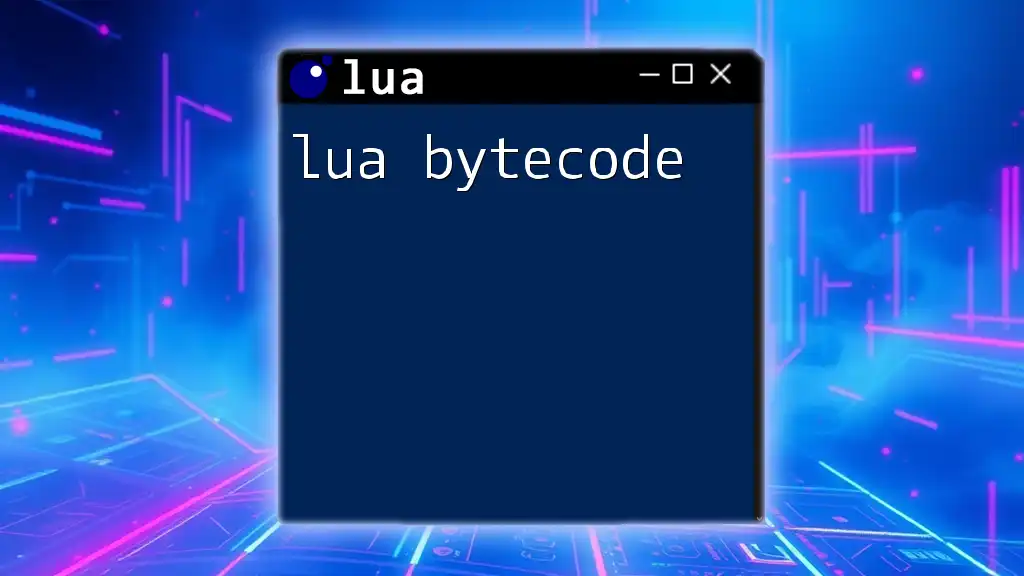
Error Handling
Understanding Errors
Errors can arise from various issues, whether syntax errors or runtime exceptions. Handling errors gracefully is crucial for robust applications.
Using Pcall for Error Handling
Lua provides `pcall` (protected call), which catches errors without stopping the execution of the program. Here’s how it works:
local status, err = pcall(function()
return 10 / 0 -- This will cause a division by zero error
end)
if not status then
print("Error occurred: " .. err)
end
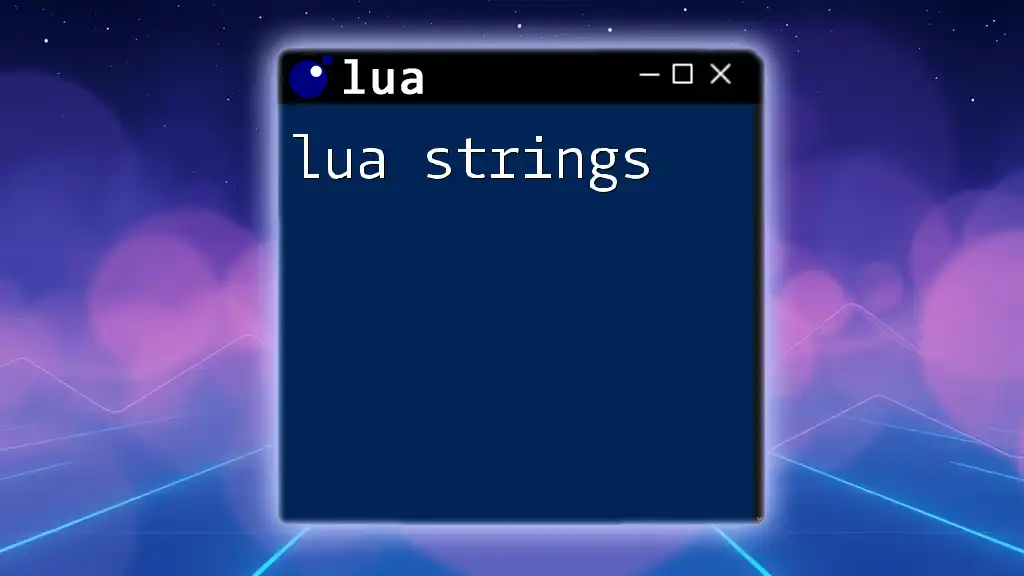
Best Practices for Writing Lua Code
Code Readability
Writing clean, readable code enhances collaboration and maintenance. Use meaningful variable names and organize code logically.
Consistent Naming Conventions
Establishing a consistent naming convention for functions and variables helps maintain clarity. For example, using camelCase for variables and functions can be effective.
Commenting Your Code
Well-placed comments can significantly improve the clarity of your code. Always strive to explain complex logic or decision-making processes clearly.
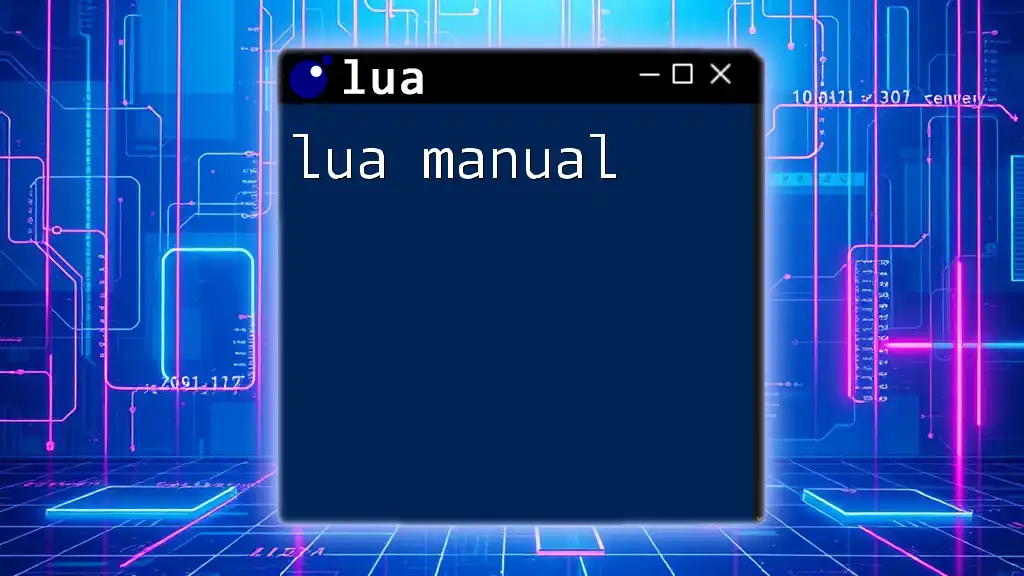
Conclusion
Understanding lua syntax is fundamental for anyone looking to harness the power of this versatile programming language. By mastering the various elements, from variables and functions to tables and error handling, you equip yourself with the skills necessary for effective Lua programming. As you continue your journey, make sure to explore additional resources to deepen your knowledge. Happy coding!

